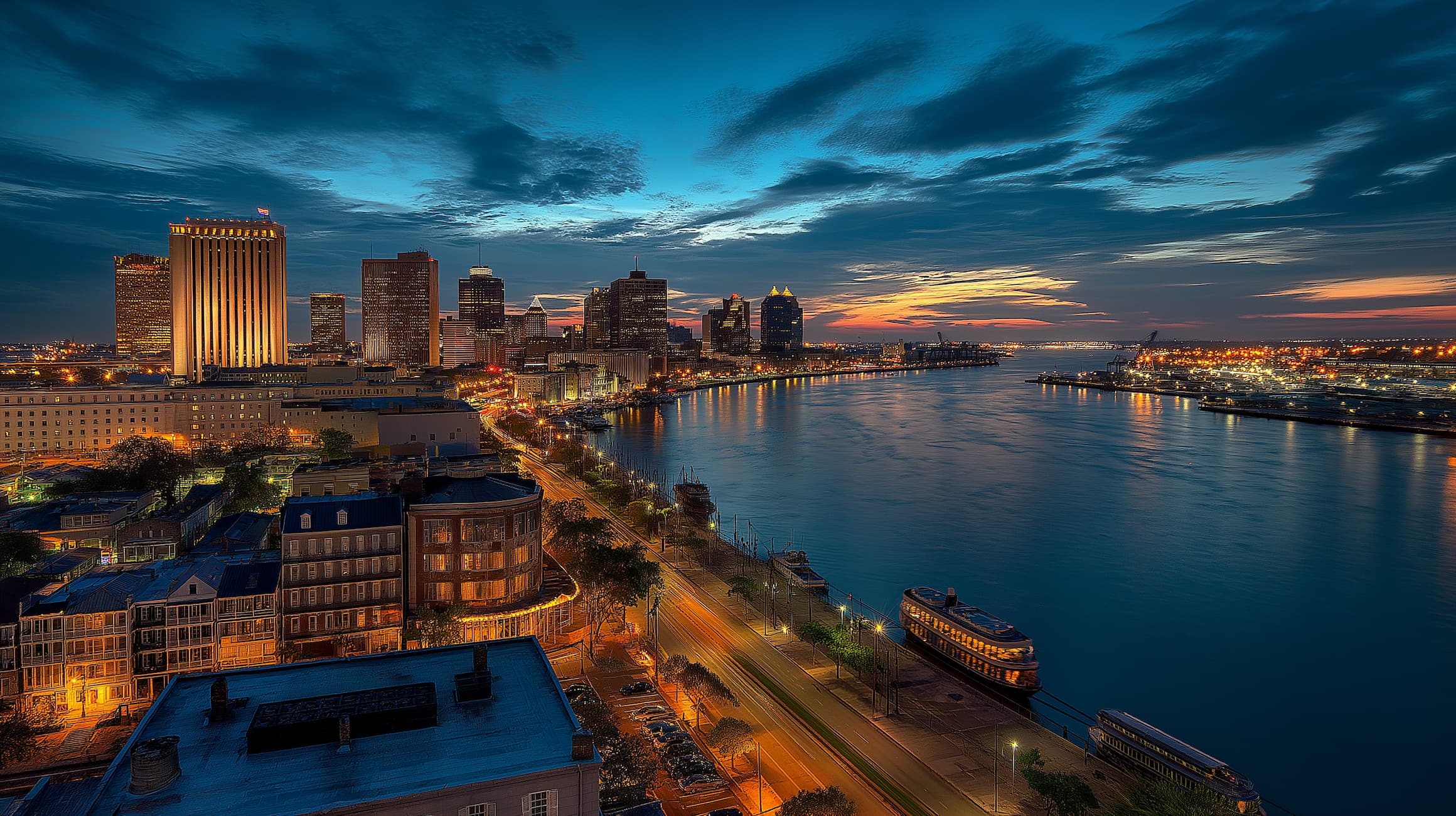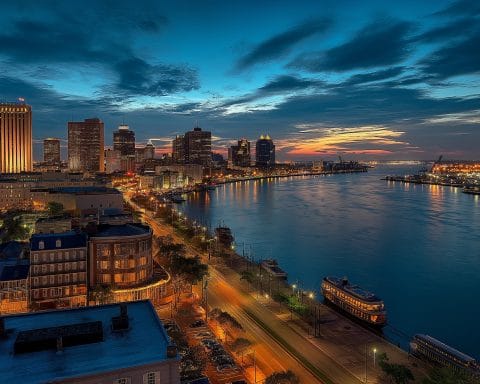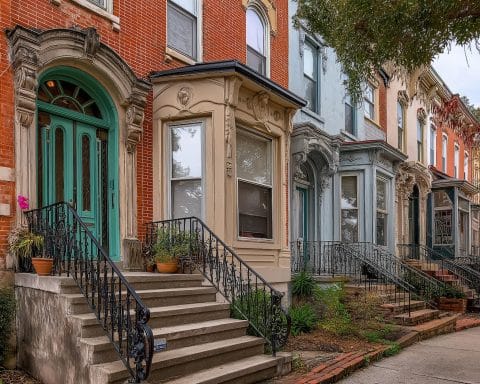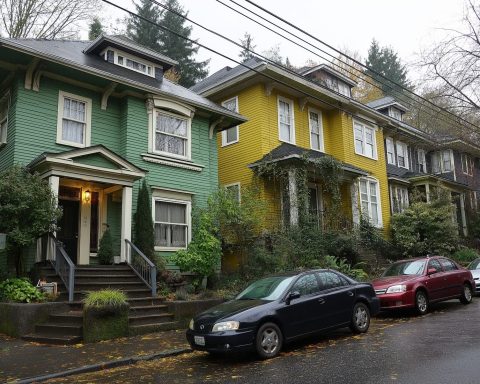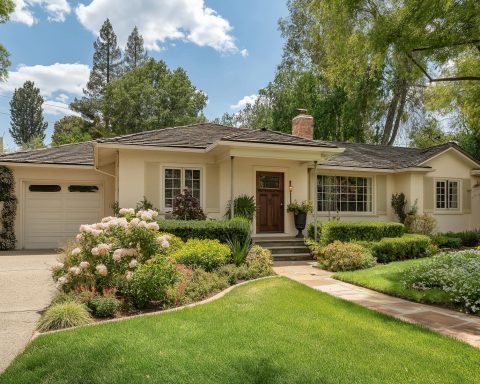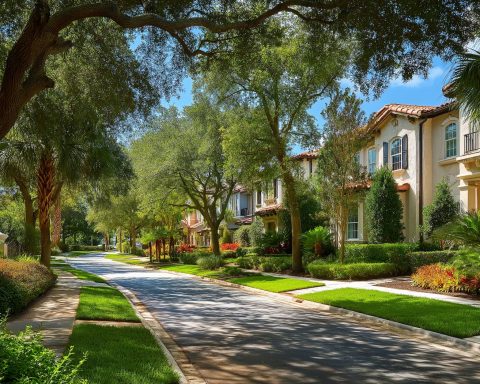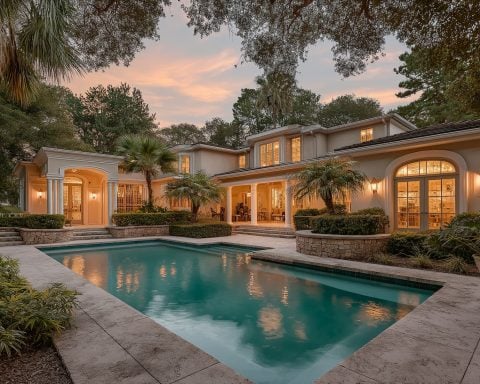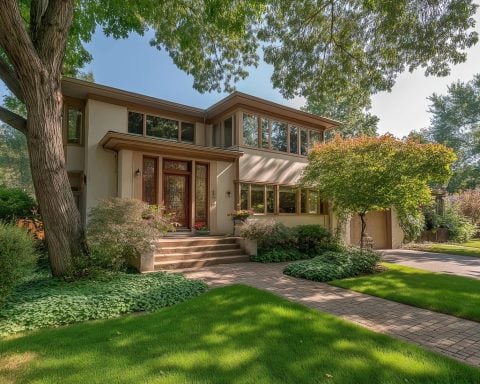Introduction: A Market at a Crossroads
New Orleans’ real estate market in 2025 is in flux, marked by mixed signals and major shifts. Residential home sales have cooled after a pandemic-era surge, even as home prices hold steady neworleanscitybusiness.com neworleanscitybusiness.com. Meanwhile, soaring insurance costs and new regulations are reshaping where and how people buy homes. On the upside, massive developments – from a $1 billion riverfront district to new hospitals – promise fresh investment steeglaw.com neworleanscitybusiness.com. This report dives into all facets of the market: residential vs. commercial trends, prices and rents, hot neighborhoods, economic drivers, new projects, policy changes, and expert forecasts for the next five years. Will the Big Easy bounce back or face further headwinds? Read on for a comprehensive look at the New Orleans real estate outlook in 2025 and beyond.
Residential Market Trends in 2025
Home sales have slowed modestly in the New Orleans metro. After a scorching June 2025 (sales +13.5% year-over-year), the market cooled in July – closed sales fell about 5.3% YoY neworleanscitybusiness.com. Year-to-date sales are roughly flat (down just 1.3% vs. 2024) neworleanscitybusiness.com, indicating a stabilization after the frenetic post-pandemic market. Orleans Parish saw a sharper decline (-16% YoY in July sales) while suburban St. Tammany Parish actually saw a 9.5% increase in sales neworleanscitybusiness.com. This suggests buyers are continuing to shift to suburban areas, a trend in recent years as families seek more space or lower costs outside the city core.
Home prices, for now, remain resilient. The metro New Orleans average sale price was ~$346,700 in mid-2025, essentially flat (-0.9%) from a year earlier neworleanscitybusiness.com. In 2024, prices even rose about 5.2% on average despite fewer sales steeglaw.com. Orleans Parish homes fetched the highest prices (around $437k average, up 3.2% YoY) neworleanscitybusiness.com, while suburban parishes like St. Tammany saw slight price declines neworleanscitybusiness.com. Inventory is tight – new listings were down ~8.6% in mid-2025 from the previous year neworleanscitybusiness.com. With fewer homes on the market, buyers have limited options, though demand has cooled just enough to balance it. Homes are taking longer to sell (averaging 64 days on market, up 21% YoY neworleanscitybusiness.com), a sign of a less frenzied, more normalized market. Elevated mortgage rates (~6.5–7%) neworleanscitybusiness.com neworleanscitybusiness.com have tempered buyer urgency, especially for first-timers. All told, New Orleans’ housing market in 2025 can be described as leveling off – far from a boom, but not a bust, with prices holding steady even as sales volume softens.
Commercial & Industrial Real Estate Trends
The commercial real estate sector in New Orleans presents a mixed picture. Retail properties have high occupancy (~91% in 2025), reflecting solid demand as shoppers return to stores steeglaw.com. However, retail rents have dipped slightly, especially in older “Class B” shopping centers, due to national chain store closures and shifts to e-commerce steeglaw.com. Office space remains a question mark – office demand is in flux as remote/hybrid work persists steeglaw.com. Many businesses are rethinking their footprints, and New Orleans is no exception, with landlords adapting spaces to new tenant needs. The overall office market hasn’t crashed, but it’s struggling with higher vacancies and uncertainty as companies evaluate long-term use of downtown offices.
On a brighter note, industrial real estate is booming. The region is leveraging its port, logistics and manufacturing strengths with major projects coming online. New facilities like an Agile Cold Storage center in nearby Pearl River, a Birdon America plant in Slidell, and a $500 million UBE Corp. manufacturing plant in Waggaman are in development steeglaw.com. These investments point to diversification of the economy toward logistics, warehousing and specialized manufacturing. Industrial vacancy rates are low and demand is high, a trend echoed across many port cities.
The hospitality sector – crucial to New Orleans – is also rebounding. Hotel occupancy and event bookings have improved with the return of large events. A newly renovated Caesars Superdome (completed in time for the 2025 Super Bowl) and a planned Omni convention headquarters hotel are reinforcing the city’s status as a major event destination steeglaw.com. Tourism-related real estate (hotels, restaurants, short-term rentals) is benefitting from the city’s enduring appeal, though as discussed later, short-term rental regulation is reshaping that landscape. Overall, commercial real estate in 2025 is a story of adaptation – retail and office owners adapt to new consumer and work patterns, while industrial and hospitality developments fuel optimism in those sectors.
Housing Prices, Appreciation Rates & Rental Market
After years of volatility, New Orleans home prices in 2025 are basically stable. The typical home value in the city is around $245,000, down just 3.4% from last year zillow.com (a modest dip, largely keeping pace with national cooling). Median sale prices are in the mid-$300s (roughly $333k as of mid-2025) zillow.com. Interestingly, the price per square foot has dropped more sharply (~12% decline) even as median sale price rose slightly steadily.com. This suggests buyers are getting more house for their money – perhaps larger homes are selling, or sellers are pricing more competitively on a per-square-foot basis. In general, appreciation rates have flattened: after a post-2020 boom, New Orleans real estate is notching low single-digit gains or slight declines. For example, Redfin data showed about a 3% yearly increase in median sale price by late 2024 steadily.com, but Zillow forecasts and other models projected a minor 1–2% dip moving into 2025 steadily.com. The overall vibe is one of plateauing values – a welcome breather for buyers after years of run-up, though not great news for recent owners hoping for big gains.
Rents, on the other hand, have been climbing, adding pressure on locals. The average apartment rent in metro New Orleans is roughly $1,300 per month (Q1 2025) mmgrea.com. Rent growth has been modest in large multifamily complexes (+1.4% annually in early 2025, just outpacing the national average) mmgrea.com. Occupancy in professionally managed apartments hovers around 91% mmgrea.com – a bit soft, reflecting slight oversupply from recent construction, but essentially stable. However, outside the big apartment buildings, rent increases have been more dramatic. With high home insurance and mortgage costs pushing would-be buyers into renting, single-family home rentals and condos saw rent spikes in 2024 – suburban house rents jumped 8%+ and condo rents shot up nearly 11% steeglaw.com. This signals strong demand for rental alternatives as many families find buying a home increasingly unaffordable. Landlords have responded to higher costs (especially insurance and taxes) by raising rents, which are often “premium” relative to local incomes and historic trends business.olemiss.edu business.olemiss.edu. In fact, one analysis noted New Orleans rents are about 1.7% above the long-term trend, meaning renters are paying slightly more than past fundamentals would suggest business.olemiss.edu.
For residents, these dynamics mean housing costs are biting. Many households face a double-whammy: homeownership isn’t yielding big gains (inflation-adjusted prices in NOLA have trended downward since 2000 business.olemiss.edu) yet owning is expensive, and renting is also pricey relative to historical norms business.olemiss.edu. The price-to-rent ratio in New Orleans is currently fairly low (~17, below the long-term average), which might signal a good buying opportunity for those who can afford it business.olemiss.edu. Indeed, some experts suggest now is a promising time to buy – with home prices a bit undervalued relative to rents, buyers could see future appreciation if the market rebounds business.olemiss.edu business.olemiss.edu. But that bet hinges on overcoming current affordability hurdles, especially high insurance and interest rates (discussed more below). In summary, New Orleans’ housing prices in 2025 are in a holding pattern, and the rental market is heating up, putting pressure on renters and potentially making home purchases look attractive if one can navigate the costs.
Neighborhood-Level Insights: Gentrification and Up-and-Coming Areas
Like many American cities, New Orleans is experiencing neighborhood transformations, with some areas booming and others struggling. In fact, New Orleans has ranked among the nation’s most gentrified cities in recent years wwltv.com. Several historic neighborhoods have rapidly changed since Hurricane Katrina. For example, the Bywater, once a working-class, artsy enclave, has become a trendy high-demand area – property values soared and the Black population dropped 64% from 2000 to 2010 amid an influx of new (often higher-income) residents bigeasymagazine.com. Blocks of Bywater now feature boutique hotels and Airbnbs, and community groups are fighting to retain some affordable housing amidst the boom bigeasymagazine.com. Adjacent Marigny has followed a similar trajectory: its mix of nightlife and historic homes has made it a popular (and increasingly pricey) alternative to the French Quarter steadily.com. Tremé, one of the oldest Black neighborhoods and a cradle of jazz, is another hotbed of gentrification pressure bigeasymagazine.com. Property values there have jumped with post-Katrina redevelopment and short-term rentals – over 10% of Tremé’s housing is now Airbnbs bigeasymagazine.com, squeezing the long-term rental supply. Residents have organized to resist some changes (even opposing a proposed City Hall relocation to the area) and to demand stricter vacation-rental rules to protect the neighborhood’s character bigeasymagazine.com.
Other neighborhoods are up-and-coming or at a crossroads. Central City, rich in civil rights history, has seen significant revitalization along Oretha Castle Haley Blvd with new cafes, art venues, and renovated housing bigeasymagazine.com. This community-led renewal (like turning a blighted school into the Myrtle Banks food hall) has brought investment, but locals are wary of being priced out. Advocates in Central City are pushing for inclusionary zoning and tax relief for legacy homeowners so that “revitalization” doesn’t equate to displacement bigeasymagazine.com. Gentilly, a largely middle-class district heavily flooded in Katrina, is quietly rising as a model for sustainable redevelopment. The federally funded Gentilly Resilience District project is installing green infrastructure (water gardens, permeable pavements) to reduce flooding bigeasymagazine.com. While this improves quality of life and attracts interest, it also raises home values – a phenomenon dubbed “green gentrification” as longtime residents worry about rising taxes and being priced out of their now-safer neighborhood bigeasymagazine.com. Community leaders in Gentilly are advocating for measures like land trusts and affordability requirements to ensure climate investments benefit residents without displacing them bigeasymagazine.com.
Not every neighborhood is booming – some still await revival. The Lower Ninth Ward, famously devastated in 2005, has seen a slow recovery and remains scarred by empty lots. Developers have recently eyed its cheap land for new projects (like a controversial high-rise condo proposal in the Holy Cross area), but residents have fiercely resisted any development that doesn’t include them bigeasymagazine.com bigeasymagazine.com. A grassroots coalition in the Lower Ninth even halted a major condo project, forcing a downscaled plan that focuses on historic restoration instead bigeasymagazine.com. This underscores how community pushback is shaping development – New Orleanians are passionate about their neighborhoods and often organize to fight displacement and preserve culture bigeasymagazine.com.
Meanwhile, some of the region’s growth is happening outside Orleans Parish entirely. Suburban and exurban areas on the Northshore (St. Tammany Parish) and to the west (Jefferson, Tangipahoa Parishes) are attracting families with their lower crime and flood risk, new subdivisions, and better schools. These areas have posted robust population and job gains, continuing a long-term decentralization of the metro area steeglaw.com. For the city, this means competition: New Orleans must balance investment in its neighborhoods to retain residents, while also tackling issues (crime, schools, infrastructure) that often drive people to the suburbs.
In summary, New Orleans’ neighborhood landscape is one of contrasts. Areas like Bywater/Marigny and parts of Downtown/French Quarter remain highly sought-after (with prices to match), while historic Black neighborhoods like Tremé and Central City grapple with gentrification’s pros and cons. Up-and-coming districts such as Algiers Point (a quaint, affordable riverfront community on the West Bank) and parts of New Orleans East could see future growth if development plans like Bayou Phoenix succeed. Across the board, the key is balance – how to welcome investment and new residents without erasing the rich cultural fabric that makes each New Orleans neighborhood unique.
Economic & Demographic Drivers
Several macro-level forces are driving the New Orleans real estate market in 2025:
- Job Growth and Industry Trends: The metropolitan economy is growing cautiously but steadily. Employment is projected to rise about 1.44% in 2025, one of the fastest growth rates among Louisiana’s metros steeglaw.com. This job growth is led by major investments in healthcare, infrastructure, and tech. For instance, the medical sector is booming – LCMC Health is mid-way through a $774 million expansion of multiple hospitals, and Ochsner Health (the region’s largest health system) is building new facilities including a state-of-the-art children’s hospital steeglaw.com neworleanscitybusiness.com. These projects not only create construction jobs but also long-term healthcare employment, boosting demand for commercial space and housing nearby. Another growth area is the port and logistics industry. With the Port of New Orleans constructing a new $1.8 billion container terminal downriver neworleanscitybusiness.com and various industrial plants opening, the region is diversifying beyond tourism and oil/gas. A tech presence is also emerging: for example, the new River District development will include a “tech-focused corporate campus” anchored by Shell’s offshore operations steeglaw.com. These economic expansions feed into real estate by increasing demand for both offices and housing, especially in areas near job centers.
- Population Shifts: Population growth (or decline) directly impacts housing demand. Unfortunately for New Orleans, the trend has been negative. The city’s population has shrunk ~3.3% in the past decade, reversing some of the post-Katrina rebound business.olemiss.edu. More recently, between 2020 and 2023 the broader metro lost about 34,000 residents net bigeasymagazine.com. This out-migration is driven by high housing costs, insurance woes, and limited economic opportunities for some residents bigeasymagazine.com. Young families and retirees alike have been drifting to other regions or the suburbs in search of affordability and stability. A stable or growing population is normally “the quickest cure” for real estate softening, as one analyst noted business.olemiss.edu – but New Orleans hasn’t had that tailwind; instead, a shrinking population has made it harder for the market to organically lift itself. There are bright spots: suburban parishes (St. Tammany, Tangipahoa) are gaining people, as mentioned, which still benefits the regional market if not the city proper steeglaw.com. Looking ahead, any improvement in New Orleans’ fortunes likely requires stemming the population decline (through job creation, quality-of-life improvements, and tackling crime and education challenges).
- Tourism and Hospitality: Tourism is a cornerstone of New Orleans’ economy, and its health affects real estate, from hotels to short-term rentals to restaurants. After the pandemic slump, tourism has largely rebounded – conventions are back, cruise ships are sailing from Port NOLA again, and iconic events like Mardi Gras, Jazz Fest, and upcoming Super Bowl LIX (Jan 2025) are drawing huge crowds. This fuels demand for hotels and vacation rentals, and it underpins retail/restaurant occupancy in tourist-frequented areas. New Orleans welcomed nearly 19 million visitors in 2022, almost back to pre-COVID levels, and that momentum carried into 2023–2025 (barring any shocks). Real estate investors keep a close eye on tourism metrics because they influence downtown hotel revenues, French Quarter property values, and the viability of hospitality-driven developments. The newly refurbished Caesars Superdome and expansion of the Convention Center (with its planned entertainment district) are intended to keep New Orleans competitive for major events, which in turn supports property values in those areas steeglaw.com neworleanscitybusiness.com.
- Climate Risks and Insurance Costs: Perhaps the most significant current driver – and constraint – on the New Orleans market comes from climate and insurance. Louisiana has been mired in a homeowner’s insurance crisis following back-to-back active hurricane seasons (Hurricane Ida in 2021 caused especially massive losses). Insurance premiums have skyrocketed to the point of severely undermining housing affordability. The statewide average annual home insurance cost hit $4,000+ in 2024, more than double the U.S. average bigeasymagazine.com. In high-risk parts of New Orleans, when you add required flood insurance and wind/hail coverage, some homeowners are looking at $10,000–$14,000 a year in total insurance costs bigeasymagazine.com – an astronomical sum that rivals mortgage payments bigeasymagazine.com. This has had a chilling effect on home sales: roughly 18% of New Orleans home sales under contract fell through in early 2025 because buyers couldn’t obtain affordable insurance or any coverage at all bigeasymagazine.com. Would-be buyers are either priced out or scared off, which reduces demand and puts downward pressure on prices. Existing homeowners, especially in working-class neighborhoods like New Orleans East, Gentilly, and the Lower Ninth, have seen policies canceled or premiums jump so high that many are at risk of foreclosure for insurance reasons alone bigeasymagazine.com bigeasymagazine.com. Over 140 Habitat for Humanity homeowners (low-income owners) in the city are imminently at risk of losing their homes due solely to insurance cost spikes bigeasymagazine.com. Renters aren’t spared either: landlords are passing on these costs via higher rent, contributing to significant rent increases and housing instability bigeasymagazine.com. The insurance crunch also feeds population decline – families who can’t afford to insure their homes or face unrepaired storm damage are leaving the area, further eroding the tax base and housing demand bigeasymagazine.com.
- Policy Responses to Insurance/Climate: Government and industry responses play a role in shaping the outcome. The state’s insurer of last resort (Louisiana Citizens) temporarily waived its 10% rate surcharge in Jan 2025 to give some relief bigeasymagazine.com. Louisiana also launched programs to lure new insurance companies (licensing 10 new insurers in 2023-24) and funded grants for home hardening (the Louisiana Fortify Homes Program) to help owners strengthen roofs and get premium discounts bigeasymagazine.com. These measures have shown some positive trends – the pace of premium increases slowed somewhat in 2024 ldi.la.gov – but they haven’t fully solved the problem. Additionally, changes to the National Flood Insurance Program (NFIP) mean many homeowners are seeing flood insurance premiums climb under a new risk-based pricing system. With about 70,000 Louisianans dropping their flood policies since 2022 because they became unaffordable bigeasymagazine.com, there’s growing concern that insurance gaps will leave the region extremely vulnerable next time a disaster strikes. Climate risk (stronger hurricanes, rising seas) thus casts a long shadow on real estate: it raises costs, scares off some investors, and necessitates continuous upgrades to infrastructure (like levees, pumps, coastal restoration) to protect property in the long run.
In summary, economic and demographic fundamentals in New Orleans are a mixed bag. There are positive signs – job growth in key sectors, huge capital investments, and a resurgent tourism scene – which all support real estate demand. However, negative forces like population decline and the insurance crisis are significant drags, reducing the pool of buyers and straining household budgets. The next few years will depend on which force prevails: If the city can create jobs and retain residents while mitigating climate risks, the real estate market could find firmer footing. If not, challenges like out-migration and high carrying costs may continue to dampen growth.
Major Developments & Infrastructure Projects
Despite headwinds, New Orleans is witnessing a construction boom in certain areas, injecting optimism into the real estate scene. Billions of dollars of projects are underway that could transform the market landscape over the next decade. Some of the most significant developments include:
- Citywide Infrastructure Overhaul: Topping the list is the Joint Infrastructure Recovery Response (JIRR) Program, a $2.4 billion initiative to repair and upgrade roads, sewerage, and water systems across New Orleans neworleanscitybusiness.com. Funded largely by federal disaster recovery money (post-Katrina and other events), this massive public works effort is finally gaining momentum as of 2024–2025. Dozens of streets are being repaved and drainage improved. While construction is disruptive in the short term, in the long run these investments should enhance property values (better drainage = less flood damage) and make neighborhoods more livable.
- The River District: One of the most anticipated new developments is the River District, a 40-acre mixed-use neighborhood being built on vacant land near the Convention Center downtown. Valued at over $1 billion, the project broke ground in 2025 with new streets and a Class A office tower underway neworleanscitybusiness.com. Plans call for a tech-focused campus (Shell will base its Gulf operations there), affordable and market-rate housing, entertainment venues, parks, and more steeglaw.com. The River District is essentially an expansion of downtown toward the Mississippi River, turning empty lots into a vibrant quarter. For real estate, it means hundreds of new housing units and commercial spaces will come online in the next few years – a shot in the arm for the downtown market and potentially a magnet for young professionals.
- New Container Port in St. Bernard: Just downriver, the Port of New Orleans is constructing the Louisiana International Terminal – a $1.8 billion container port in Violet (St. Bernard Parish) neworleanscitybusiness.com. This is a huge infrastructure project to enable the region to handle larger cargo ships and more shipping volume. While not in Orleans Parish, it will have spillover benefits: more port jobs, more demand for industrial real estate (warehouses, distribution centers) across the metro, and possibly increased attractiveness for manufacturing companies to locate nearby. It’s a long-term play that cements New Orleans’ role in global trade and could indirectly boost housing demand if it leads to job growth.
- Healthcare and Biosciences Expansion: The medical sector’s growth comes with physical expansion. LCMC Health’s $774 million of hospital expansions (ranked the #4 largest project in the region) is nearing completion neworleanscitybusiness.com, including major upgrades at East Jefferson, West Jefferson, University Medical Center and others. Tulane University’s redevelopment of the old Charity Hospital (#5 on the project list) is in progress – this historic 1-million-square-foot art deco building, empty since Katrina, is being converted into a mixed-use complex with apartments, offices, and Tulane’s bioinnovation hub neworleanscitybusiness.com. When finished, it will bring new residential units downtown and anchor the burgeoning biomedical district. Additionally, Ochsner’s new $100+ million Benson Children’s Hospital will add a cutting-edge pediatric facility in Jefferson Parish neworleanscitybusiness.com. These projects not only improve healthcare access but also tend to raise nearby real estate values (areas around new hospitals often see ancillary development of clinics, labs, and housing for employees). They also signal confidence: major institutions are investing for the long term.
- Entertainment & Recreation: New Orleans is modernizing its attractions. The Caesars Superdome just completed a multi-year renovation (over $450 million invested) ahead of hosting the 2025 NFL Super Bowl neworleanscitybusiness.com. The adjacent Convention Center has invested about $270 million so far in upgrades (roof, meeting rooms, a new Linear Park along Convention Center Blvd) neworleanscitybusiness.com, making it more competitive for events. Perhaps most exciting for residents, the long-abandoned Six Flags amusement park site in New Orleans East (Bayou Phoenix) finally has a master plan (#7 on the project list) neworleanscitybusiness.com. The Bayou Phoenix redevelopment envisions a mixed-use project potentially featuring a logistics hub, water park, sports facilities, retail and more, which could revitalize New Orleans East. If executed, this would bring jobs and amenities to an area that has languished for 18 years, likely boosting real estate in New Orleans East (currently one of the most affordable but disinvested sections of the city).
- Transit and Parks: The Regional Transit Authority (RTA) is undertaking a fleet modernization and infrastructure improvement plan (#8 on list) with new buses, streetcar upgrades, and perhaps eventual light rail expansions, funded by federal grants neworleanscitybusiness.com. Better transit can open up neighborhoods (increasing access and property values over time). Meanwhile, the City Park Conservancy launched a $200 million master plan to upgrade New Orleans City Park’s amenities over 20 years constructionowners.com. More immediately, numerous smaller road, bridge, and drainage projects are ongoing via state and federal infrastructure bills, which collectively enhance the resilience and connectivity of the city.
These major projects underscore a theme of “reinvestment” in Greater New Orleans. Decades after Katrina, a combination of public and private capital is rebuilding the city’s foundation – literally and figuratively. The immediate impact on real estate is already visible in construction jobs and increased investor interest in certain corridors. In the next 3–5 years, as projects like the River District and Charity Hospital redevelopment come to fruition, they are expected to create new real estate hubs (for example, expect the area between the Convention Center and the Superdome to see a surge of new apartments, shops, and offices). Neighborhoods adjacent to big projects can expect spillover effects – e.g. gentilly with the resilience district, the Bywater/Upper 9th with the port and industrial revival, New Orleans East with Bayou Phoenix. For homebuyers and investors, keeping an eye on these development nodes is key; they often become the “next hot neighborhoods” or at least enjoy better infrastructure and services after years of neglect.
Policy & Regulatory Changes Impacting Real Estate
The New Orleans real estate landscape in 2025 is being reshaped not just by market forces, but also by policy decisions and new regulations. Some key changes and debates include:
- Short-Term Rental Crackdown: Perhaps the most consequential local policy change has been the City of New Orleans’ aggressive new regulations on short-term rentals (STRs), such as Airbnb. In an effort to protect housing stock and curb nuisance properties, the City Council enacted some of the strictest STR rules in the nation in 2023. Notably, only one property per square block can be permitted as a short-term rental in residential areas veritenews.org. If multiple owners apply, a lottery decides who gets it. Also, each host can only hold one STR permit citywide (no more owning 5 Airbnbs) and corporate ownership is banned veritenews.org. Crucially, any STR in a residential zone must have a full-time owner or manager living on-site veritenews.org – effectively outlawing whole-home vacation rentals by out-of-state investors. Additionally, STRs are outright prohibited in the French Quarter and most of the Garden District veritenews.org by previous rules. These regulations, which took effect in 2023 and early 2024, have dramatically cut the number of legal Airbnbs in the city. (In popular neighborhoods like Marigny/Tremé, many STR licenses were not renewed under the one-per-block rule, and platforms were forced to delist non-compliant properties veritenews.org.) The fallout: some investors have exited, putting those homes on the market, which could increase long-term housing supply. Neighborhood activists welcome the changes, blaming STRs for driving up rents and “driving gentrification” in high-demand areas veritenews.org. But on the other side, homeowners who relied on STR income are upset, and Airbnb itself joined a lawsuit against the city in 2025, calling the rules “extreme” and an infringement on property rights veritenews.org veritenews.org. As of mid-2025, that lawsuit is ongoing in federal court. The outcome will have major implications: if the rules stand, New Orleans will remain a relatively hard place for STR investments, possibly shifting more demand back to hotels and long-term rentals. If the regulations get struck down, the STR floodgates might reopen. For now, investors should approach short-term rentals cautiously, and neighborhood residents are watching enforcement closely (the city is even requiring platforms to remove listings without permits) veritenews.org.
- Insurance and Climate Policy: Given the insurance crisis described earlier, there’s been policy movement at the state level. In 2023, the Legislature approved a $45 million incentive fund to attract insurers to Louisiana, which by 2024 helped entice about 10 new insurers to write policies bigeasymagazine.com. Lawmakers also adjusted some regulations – for example, they passed Act 754 of 2024 which lifted a prohibition and now allows insurers to raise deductibles or cancel policies after just one year (previously they had to wait three years), a controversial change aimed at giving insurers more flexibility to stay in the market wwno.org. Critics say this favors insurers over consumers. Another new initiative is the Louisiana Fortify Homes Program, offering grants up to $10,000 for homeowners to harden their roofs against hurricanes bigeasymagazine.com. This popular program was funded with $20 million to start, and grants were snapped up in minutes when the application portal opened, reflecting huge demand for help. At the federal level, reforms to the National Flood Insurance Program (Risk Rating 2.0) are being hotly debated, as they have led to steep premium hikes on older homes in low-lying areas. Local officials are lobbying Congress for a cap on annual flood insurance increases to prevent more homeowners from dropping coverage. All these insurance-related policies directly affect real estate: the success or failure of the state’s interventions will influence whether insurance premiums stabilize (making homeownership attainable) or continue to soar (further hurting prices and sales).
- Zoning and Affordable Housing Policy: New Orleans has been grappling with how to encourage development of affordable housing amid gentrification and rising rents. One tool is inclusionary zoning – requiring or incentivizing developers to include affordable units in new projects. The city implemented a limited inclusionary housing policy in 2019 (the “Smart Housing Mix”), but it applied only in certain zones and offered developers density bonuses in exchange for including affordable units. The results have been modest. In 2025, community groups, especially in rapidly changing areas like Central City, are calling for stronger inclusionary zoning laws that would make affordable set-asides mandatory for large developments bigeasymagazine.com. They are also pushing for property tax relief programs for long-time homeowners in gentrifying areas (to prevent “tax gentrification” where rising assessments force people out) bigeasymagazine.com. While no sweeping new housing ordinance has passed as of mid-2025, the City Council has indicated interest in expanding affordability requirements and has continued funding initiatives like the Soft Second Mortgage program (down payment assistance for first-time buyers). Additionally, as part of the City’s climate resilience strategy, there’s talk of zoning changes to encourage elevation of homes and resilient building techniques, and to prevent rebuilding in the most flood-prone spots (though any retreat from low areas is very controversial).
- Tax and Incentive Changes: The local government has kept property tax rates relatively steady, but the assessed values increased in the latest reassessment, meaning many homeowners saw tax bills rise. In response to public outcry, officials have discussed increasing the homestead exemption (currently $75,000) to offset rises for primary residences – this would require state approval. There’s also discussion of tightening the Industrial Tax Exemption Program (ITEP) which has historically given big tax breaks to industries (sometimes at the expense of local tax revenue for schools). If the city negotiates harder on ITEP, it could bring more tax dollars into public services, indirectly benefiting real estate via better infrastructure and schools. On the incentive side, New Orleans continues to use tools like the Opportunity Zones (several low-income tracts in the city offer federal tax breaks to investors) and local PILOT (Payment In Lieu of Taxes) deals to spur development in blighted areas. The effectiveness of these is mixed – some argue they accelerate gentrification, but they have helped finance some projects like affordable housing complexes.
In essence, policy is actively shaping the New Orleans market: cracking down on speculative STR use, grappling with the fallout of climate risk, and seeking paths to housing affordability. Property investors and homeowners alike need to stay attuned to City Council and state legislative decisions, as changes in STR laws or insurance regulations can swiftly alter property values and investment returns. New Orleans has always had a unique regulatory environment (for example, strict historic preservation rules in many neighborhoods), and 2025 is proving that governmental actions – be it a new ordinance or a state relief fund – can significantly influence the real estate trajectory in the city.
Investment Opportunities and Market Outlook
Given the complex backdrop, what opportunities does the New Orleans real estate market offer investors in 2025? And what is the market outlook for the coming years?
Current Investment Opportunities: For savvy investors, New Orleans presents a somewhat contrarian play. While some markets boomed with 20% annual price gains in 2021, New Orleans has been comparatively undervalued and slow-growing, which means there may be less downside risk and room for upside. The price-to-rent ratio around 17 (low by national standards) signals that buying rental property can yield solid returns – home prices are relatively cheap for the rent they generate business.olemiss.edu. Indeed, an average home at ~$245k can often rent for ~$1,500+ in many neighborhoods, a decent yield. Foreclosures and distressed properties are another niche: the city still has blighted houses and succession properties that savvy investors can buy and rehab. Some investors are actively watching foreclosure auctions and listings for bargains steadily.com, aiming to renovate and either rent out or resell. With interest rates high, fewer individual “flippers” are competing, potentially giving well-capitalized buyers a chance to acquire properties below market value, especially if some homeowners capitulate due to insurance or financial stress.
Certain neighborhoods and property types appear especially ripe for investment:
- Undervalued neighborhoods: Parts of New Orleans East and Gentilly, where home prices ($100k–$200k range) are low relative to the rest of the city zillow.com, could see appreciation if planned developments (like Bayou Phoenix) take off or if insurance relief comes. These areas have higher risk (crime, slower appreciation historically), but also higher upside if the city focuses on them for renewal.
- Transit-oriented and higher-ground areas: Neighborhoods along the new streetcar lines or on natural ridges (e.g. Broadmoor, Mid-City, parts of Uptown that haven’t fully gentrified) are attractive for their resilience and amenities. Mid-City, for instance, has hospitals and the new LSU/VA medical complex driving demand. Investors eyeing duplexes and fourplexes there can tap into the steady influx of medical students and young professionals.
- Commercial and mixed-use properties: With office uncertainty, one might shy away from traditional office buildings. But there’s opportunity in converting historic buildings to mixed-use or residential. The trend of converting old downtown office towers into apartments or hotels is ongoing (several CBD high-rises have done this successfully). Investors partnering in such redevelopments may benefit as demand for urban apartments slowly picks up with the return of city life post-pandemic.
- Industrial/logistics properties: Given the port expansion and industrial projects, warehouse space and light industrial sites in the region (especially in Kenner, Elmwood, New Orleans East industrial park) are in demand. Real estate investment trusts (REITs) and private equity are looking at New Orleans for the first time in a while due to these logistic developments. Local investors could ride that wave by securing land or outdated warehouses now before values jump.
- Climate-resilient new construction: There’s a growing niche in building or selling elevated, resilient homes in flood-prone neighborhoods. Buyers will pay a premium for houses built to high flood standards (on piers, with hurricane-resistant materials), especially if insurance remains a concern. Developers focusing on resilient affordable housing – e.g., raised homes in Gentilly or the Lower 9 – could tap into grants and a market of locals who want new construction in their own community.
Market Forecast: The outlook for New Orleans real estate over the next few years is cautiously neutral, with a chance of modest gains or declines depending on external factors. Several forecasts predict that home prices may dip slightly further in the short term. Zillow’s latest projections are mildly bearish: forecasting around a -2.0% change in the NOLA metro home values for calendar 2025, and potentially a total decline of about 7% by mid-2026 resiclubanalytics.com resiclubanalytics.com. In fact, New Orleans was ranked among the top 5 weakest markets nationally in Zillow’s outlook (with only some smaller Louisiana cities expected to fare worse) resiclubanalytics.com. This pessimism is tied to affordability challenges and inventory growth – as Zillow notes, higher listings and fewer buyers due to affordability can put downward pressure on prices resiclubanalytics.com resiclubanalytics.com. Other analysts similarly see gradual declines, not a crash. A Louisiana housing report projected New Orleans home prices might tick down -5% to -6% by late 2025 compared to 2024 manfreandassociates.com. Factors like the insurance crisis and out-migration fuel these expectations of softness.
However, beyond 2025–26, the picture could improve if certain things go right. Local experts strike an optimistic tone long-term, noting that New Orleans is a “market in transition” but has resilience and reinvention on its side steeglaw.com. The massive infrastructure and economic investments underway are laying groundwork for future growth. If jobs continue to grow and some population loss is stemmed, housing demand could revive. We might then see a return to moderate appreciation (say 2–4% annually) later in the decade. In the rental market, as new construction tapers off and excess supply is absorbed, rent growth could accelerate a bit from the current low levels – especially for Class A apartments, which one forecast expects to lead rent increases in 2025 due to limited new deliveries mmgrea.com.
Upside scenario: Should insurance costs stabilize (for example, if more insurers enter the market or government subsidies increase) and interest rates ease by 2026, New Orleans could suddenly look very attractive given its relatively low prices. In such a scenario, pent-up buyer demand (from those who postponed purchases) could return, pushing prices up again. Renewed interest in urban living post-COVID and the unique culture of New Orleans could draw new residents (remote tech workers, retirees, etc.) if the city can market itself well and make progress on quality of life issues. It’s not inconceivable that after a flat 2025, the 2026–2028 period might see cumulative price growth in the 5–10% range if the stars align (still modest, but a reversal from recent declines).
Downside risks: On the other hand, if another major hurricane hits the region or if insurance remains unsolved, the market could stagnate or worsen. Prolonged population decline is a real threat – losing a few thousand residents each year creates a persistent drag on housing. Also, if national economic conditions worsen (recession, etc.), New Orleans often feels it acutely and recovers slower than hotter markets.
Most analysts do not foresee a dramatic crash in New Orleans real estate – partly because it never overheated as much as other cities, so there’s no big bubble to burst. Instead, the consensus is for a slow adjustment: slight price declines or flat performance in the near term, then slow growth resuming as the city adapts to its challenges. As one local Realtor quipped, “New Orleans might skip the rollercoaster others had – we’re just on a gentle ride”. For investors with patience and a stomach for some risk, this market offers decent value plays and the chance to get in on the ground floor of neighborhoods before potential turnarounds.
Expert Predictions for the Next 3–5 Years
What do local experts and analysts expect for New Orleans real estate in the next few years? Here are a few predictions and viewpoints from those on the ground:
- Continued Market Stabilization: Real estate professionals in New Orleans largely predict a stable or slowly improving market rather than any dramatic swings. Jessica B. (NOMAR Realtor) noted in a recent panel that she expects “prices to stay within a few percentage points of current levels for the next year or two,” barring unforeseen disasters. Many expect flattening interest rates by 2025–2026 to bring some buyers back, offsetting any minor price dips. In essence, the housing market is seen as bottoming out and reaching equilibrium after a rocky 2020–2023.
- Selective Appreciation in Desirable Areas: Local investors predict that certain high-demand neighborhoods will outperform. For instance, areas that have weathered the insurance crisis better (those on higher ground or with newer construction) could see above-average appreciation. A real estate research group from University of New Orleans concluded that “neighborhoods like Lakeview, Uptown, and parts of Mid-City are poised for modest appreciation (~3% annually) due to sustained demand from higher-income buyers,” even as the metro average stays flat. Conversely, low-lying areas might see values stagnate. This bifurcation – stronger price growth in favored locales, weaker in risk-prone ones – is a common theme among experts.
- Rentals Will Remain Strong: Property managers forecast a robust rental market for the foreseeable future. High interest rates and insurance will keep some families renting, so demand for quality rentals (especially single-family homes) should stay high. Some expect rents to outpace home values in growth. “In three years, don’t be surprised if rents are 10–15% higher than today,” one apartment developer remarked, citing limited new supply and steady demand. However, there’s a flip side: if job growth falters, rent increases could be limited by local incomes. Overall, experts see more rent hikes coming, though perhaps not as dramatic as the recent 8–10% jumps in some segments steeglaw.com.
- Impact of Climate Efforts: Environmental and planning experts believe the city’s aggressive resilience efforts will pay dividends. They predict that projects like the Gentilly Resilience District and strengthened levee systems will protect neighborhoods and preserve property values in the face of climate threats. One urban planner noted that “if New Orleans can avoid a major flood disaster in the next 5 years thanks to these investments, it will build confidence in the market.” On the other hand, insurance costs are the wildcard – if they cannot be reined in, some experts warn of “continued flight of middle-class homeowners.” The hope is that a combination of state policy and market forces will bring more insurers back by 2026, easing premiums. This is perhaps the single biggest factor experts are watching for mid-term market health.
- Commercial Sector Forecast: Local commercial brokers predict an uptick in industrial and mixed-use development and a “repurposing wave” for older commercial buildings. They foresee more warehouse construction to support the port and e-commerce, and continued conversions of obsolete office space into apartments or hotels downtown. Retail is expected to be stable, not growing dramatically but filling in with local retailers and entertainment uses as some national chains exit. Office vacancy is predicted to remain elevated (some think downtown office vacancy could stay above 20% for years) until either companies start expanding again or buildings are converted. In interviews, commercial realtors remain optimistic on New Orleans’ unique sectors: “Healthcare, education, and port logistics are where we’ll see real estate expansion. The rest will be about reinventing existing spaces,” said one brokerage VP, summarizing the outlook.
- Long-Term Optimism (with Caution): Perhaps the most common sentiment among New Orleans real estate veterans is cautious optimism. They’ve seen the city’s ups and downs, and many believe the current transitional period will lead to a healthier, more sustainable market. The phrase “resilience and reinvestment” from the UNO forecast seminar captures this: stakeholders who adapt to new dynamics – whether it’s building elevated homes, embracing public-private development partnerships, or catering to the changing population – are likely to succeed steeglaw.com. Experts emphasize that New Orleans is playing the long game: investments in infrastructure and community will take a few years to really manifest in property values. By 2028–2030, some predict New Orleans could be on a “mini upswing” as these efforts bear fruit, potentially outpacing the national market if all goes well.
Of course, all predictions should be taken with a grain of salt. As 2020 taught everyone, unexpected events (pandemics, natural disasters, economic shocks) can upend forecasts overnight. But in aggregate, the expert view is that New Orleans real estate will slowly regain its footing, with no wild boom on the horizon but a gradual path of overcoming challenges. In the next 3–5 years, success in this market will likely come to those who are strategic and informed – whether that’s homeowners fortifying their property and taking advantage of buyer’s market conditions, or investors picking the right neighborhood and focusing on long-term value over short-term flips. The Big Easy’s housing future will depend on navigating its unique risks while leveraging its very unique strengths – cultural vibrancy, historic architecture, and a populace that’s proven time and again that resilience is in its DNA.
Conclusion
New Orleans’ real estate market in 2025 is a study in contrasts and resilience. On one hand, the city faces real challenges: soft population growth, affordability and insurance hurdles, and a housing market that’s cooler than many other Sunbelt cities. Home prices have leveled off, and some forecasts even call for slight declines in the near term resiclubanalytics.com. Yet on the other hand, signs of reinvestment abound – ambitious developments are reshaping the skyline and neighborhoods, job sectors are growing, and the rental market remains robust. Neighborhood dynamics continue to evolve, with gentrification transforming certain areas even as community activists fight to keep New Orleans inclusive and authentic bigeasymagazine.com.
The next few years will be pivotal. If New Orleans can tackle its insurance crisis, keep nurturing job growth, and implement smart policies for housing and climate resilience, the real estate market is poised to find its footing and even flourish. Experts foresee a transition to stability, with opportunities for those who look past the current headwinds and invest in the city’s long-term potential steeglaw.com. Investors are cautiously returning, attracted by reasonable valuations and the promise that “undervalued” New Orleans may finally get its groove back. Homebuyers who’ve been priced out elsewhere might find the Big Easy a relative bargain – especially if they are drawn by its unmatched culture and are savvy about mitigating risks.
In sum, New Orleans real estate circa 2025 is no get-rich-quick scheme, but it offers a compelling story of resilience and reinvention. The market is balancing between boom and bust, likely steering a middle course of gradual improvement. As the city’s motto goes, “Laissez les bons temps rouler” – let the good times roll – but cautiously. All stakeholders, from homeowners to policymakers, are learning to navigate the new normal: a market of careful optimism, where the foundations (both literal and figurative) are being laid for a more stable and prosperous real estate future in the Crescent City.
Sources: New Orleans Metropolitan Association of Realtors data neworleanscitybusiness.com neworleanscitybusiness.com; UNO 2025 Real Estate Outlook steeglaw.com steeglaw.com; Zillow & Redfin market stats steadily.com zillow.com; Ken Johnson (Ole Miss) analysis business.olemiss.edu business.olemiss.edu; Big Easy Magazine reports on gentrification and insurance bigeasymagazine.com bigeasymagazine.com; CityBusiness construction updates neworleanscitybusiness.com neworleanscitybusiness.com; City of New Orleans STR regulations veritenews.org veritenews.org; ResiClub Analytics (Zillow forecast) resiclubanalytics.com.
